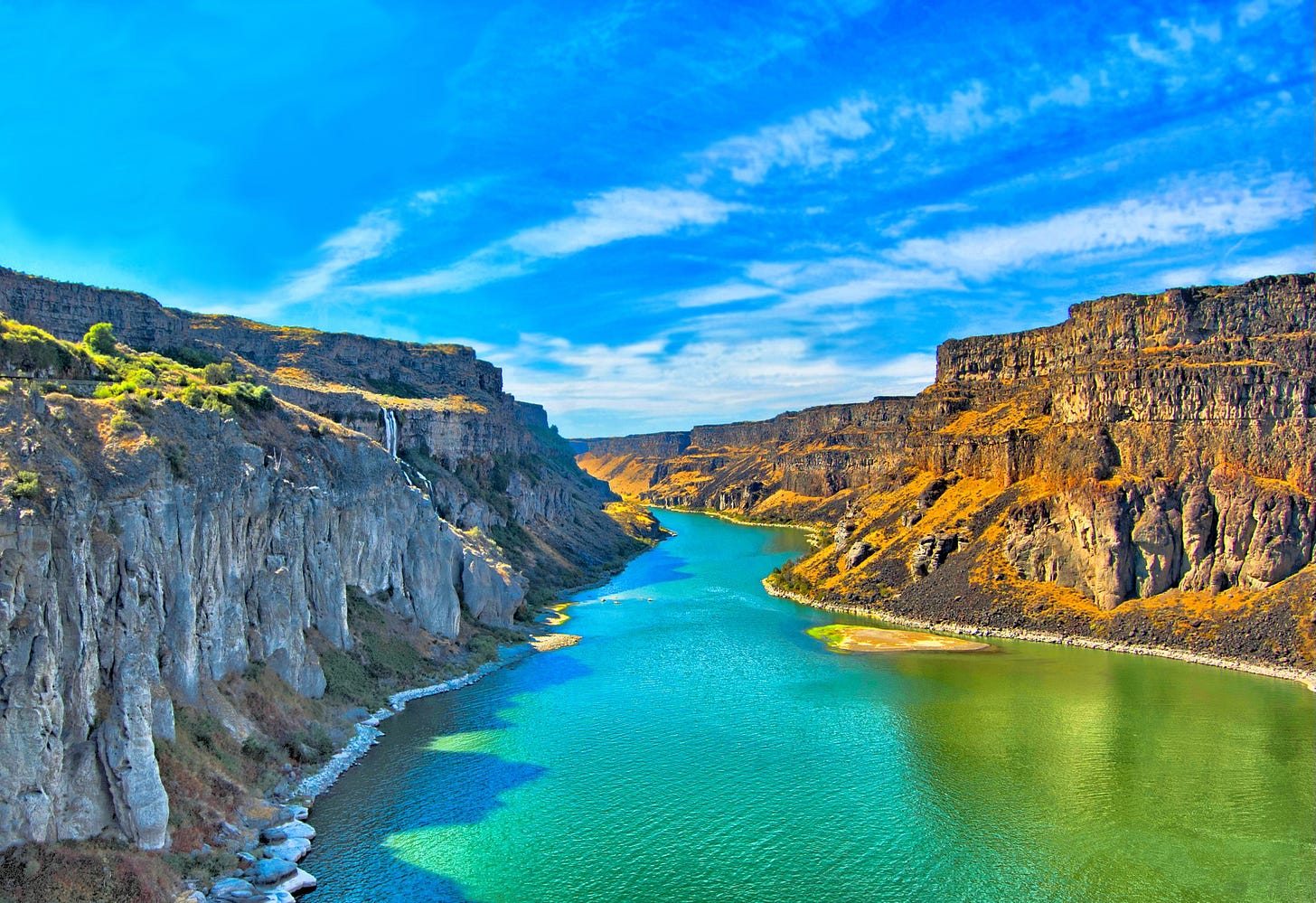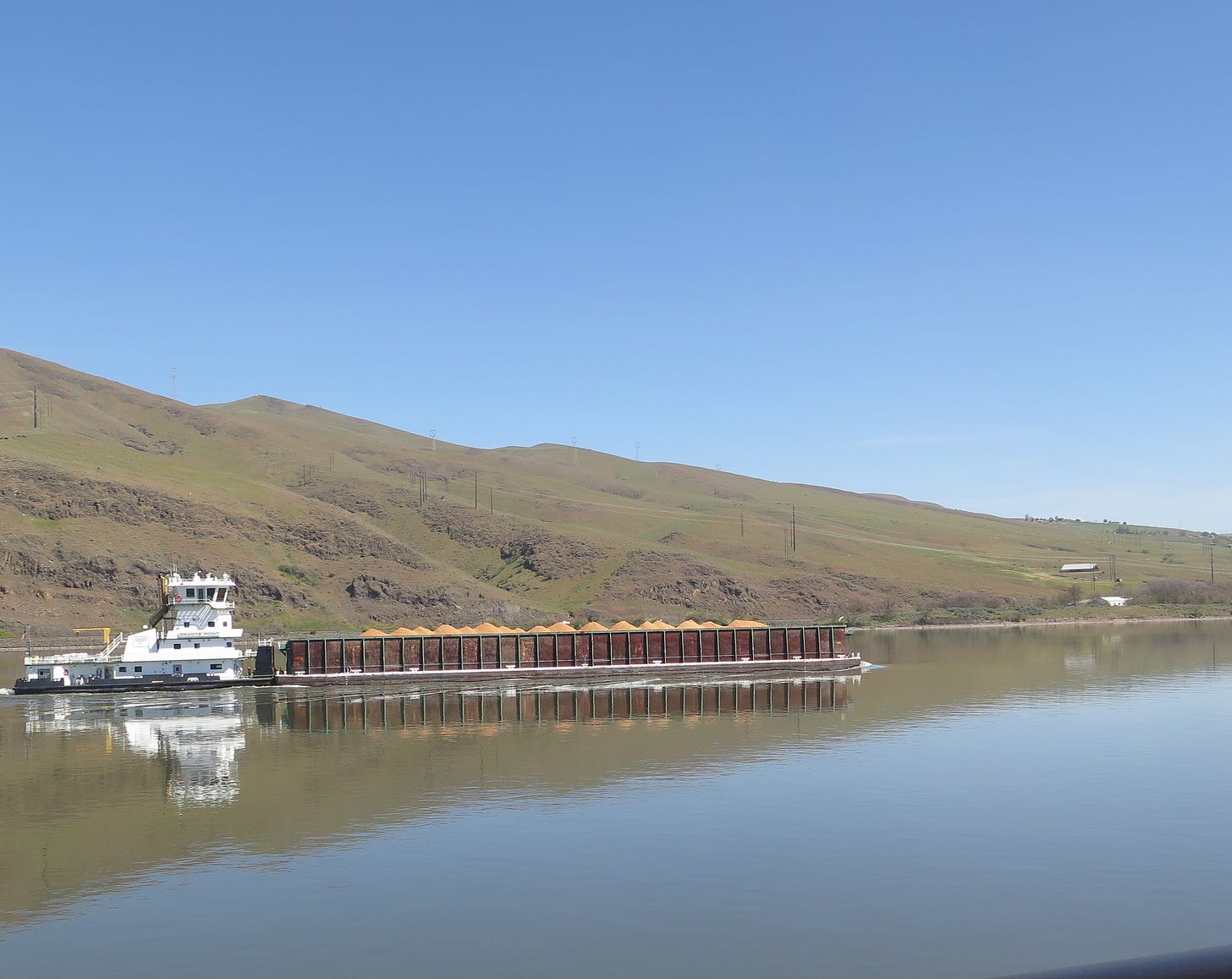Following the Lewis and Clark Trail by River Cruise
In the very early 19th century, two men led an expedition to travel through and chart part of the largely unexplored western region of the United States.
During their two-year journey into an unmapped part of the world they covered over 4,000 miles, discovered and cataloged hundreds of then unknown plant and animal species, and interacted with members of a number of Native American tribes.
I recently retraced some of the route followed by Lewis and Clark, but without having to overcome the many difficult and often dangerous challenges they faced. I was traveling in comfort aboard the American Cruise Lines’ Harmony, one of that company’s fleet of luxury ships which follow more than 50 itineraries along rivers, bays and oceans in, or just offshore of, the United States.
Our itinerary included the Columbia and Snake Rivers as they flow through Washington State and Oregon, with stops along the way to explore and enjoy a variety of towns, historic sites and other land-based attractions. Reliving the story of the famous Lewis and Clark excursion was but one of a number of opportunities to delve into history, be immersed in some of Mother Nature’s most magnificent handiworks, and enjoy five-star comfort and cuisine in what resembles a floating hotel.
The Lewis and Clark Expedition whose route I was following was commissioned by President Thomas Jefferson after the Louisiana Purchase of 1803.
He wanted the two men to check out the newly acquired territory, find a travel route through the western half of the continent to the Pacific Ocean and establish an American presence in the area.
My initial introduction to the fascinating story of the Corps of Discovery, as the group was called, came during a guided bus tour of Astoria, Oregon, the location of the National Lewis & Clark Historic Park. Situated near the mouth of the Columbia River, it stretches some 40 miles along the rugged Pacific coastline.
Exhibits include a replica of Fort Clatsop, two log structures where the Corps spent the winter of 1805-1806. The 6.5-mile-long Fort to Sea Trail approximates the route followed by the explorers as they traveled to and from the ocean, and the Dismal Nitch is a cove where the expedition was pinned down for six days by a fierce storm.
Another intriguing chapter of the account came to light at the Lewis and Clark Interpretive Center, located in Cape Disappointment State Park.
That enclave is perched on a high bluff overlooking the pounding Pacific surf.
Displays at the museum are focused upon the Corps of Discovery’s stay along the Pacific Coast during the winter of 1805-1806. That story is told by mural-size timeline panels, paintings, photographs and the words of members of the group who kept journals. The eclectic collection also includes the bones of a gray whale, Native American artifacts and descriptions by Lewis and Clark of their encounters with many animals.
Equally absorbing displays await visitors to the Columbia Gorge Discovery Center, which describe and display the geology, flora, fauna, history and development of the region. The life-size replica of a Columbian mammoth offers a perspective to the mammals that once lived in the area. Exhibits trace 10,000 years of indigenous native history which make the Columbia Gorge one of the oldest sites of human habitation in the Western Hemisphere. Some rooms replicate a rain forest and other natural environments, display the kinds of cargo that Lewis and Clark transported, and describe the dams located along the Columbia River.
That waterway, and the Snake River, are tamed by a series of dams which generate hydroelectric power, assist navigation, and provide flood control and irrigation. Our passage through eight of them became special events that prompted many passengers, including me, to find good viewing places from which to observe the action. We marveled as our captain carefully guided the ship into the narrow locks, a massive door behind us closed, the vessel slowly rose as water flowed into the chamber and we resumed our journey many feet higher than when we had approached the dam.
Explanations of lock operations were among a wide variety of on-board presentations that kept passengers involved.
Other presentations included detailed descriptions of each day’s shore excursions, a tour of the ship’s pilot house and painting, knitting and other craft activities.
One highlight was a series of presentations by David Stephens, an expert in natural history, native culture and art, and a showman who combines informative information with enjoyable entertainment. Prancing, dancing and sashaying across the floor he elucidated about topics as diverse as the Columbia River dams, the life of salmon and traditions of the native people of the region.
My favorite program was a demonstration by members of the Nez Perce people.
They were descendants of Native Americans who were dominant in the region for thousands of years. The male presenter recounted historical tidbits that have been passed along by tribal storytellers for generations, while his female counterpart described items and adornments on her clothing, some of which were 200 years old.
This introduction to intriguing aspects of the life of indigenous people was one of many activities that added much interesting information, and enjoyment, to the cruise. It was another pleasant surprise among many that made my trip a memorable one.
If you go
Outreach from American Cruise Lines began well before our voyage did. I received a flow of information along with the phone number of the “customer service team” in case I had any questions. When I checked into my hotel the night before boarding the ship, I was handed a folder with my name tag, the itinerary and a wealth of other helpful material.
The staterooms on the ship have individual temperature controls and an outside seating veranda, and free clothes washers and dryers are available.
American Cruise Lines voyages include at least one daily shore excursion; a variety of on-board lectures, enrichment programs and other activities; gourmet meals and 24/7 snack availability; cocktail hours; gratuities, port charges and other fees, and pre- or post-cruise hotel stay if required.
For more information log onto americancruiselines.com or call 1-800-460-4518.






